Power drills are an essential tool in any power tool arsenal. But they are just as useful in an automotive setting, find applications in garages when working on cars, bikes and basically anything with wheels and an engine.
While anyone building a car tool kit will want to start with a decent set of sockets, the power drill is a valuable addition. Not quite as specialised as impact wrenches, power drills are a great tool to have at hand when repairing bodies, installing aftermarket equipment or completing any restoration task.
Casual DIYers can also find benefits in a power drill for automotive use with detailing tasks, such as buffing, polishing, and headlight restoration, in addition to the wealth of other general domestic tasks. With cordless power drills being as versatile as they are, there’s no reason to suggest models specifically for automotive use - all of our picks are general-purpose and cordless, for ease of use and flexibility.
The best cordless power drills
Editor’s pick
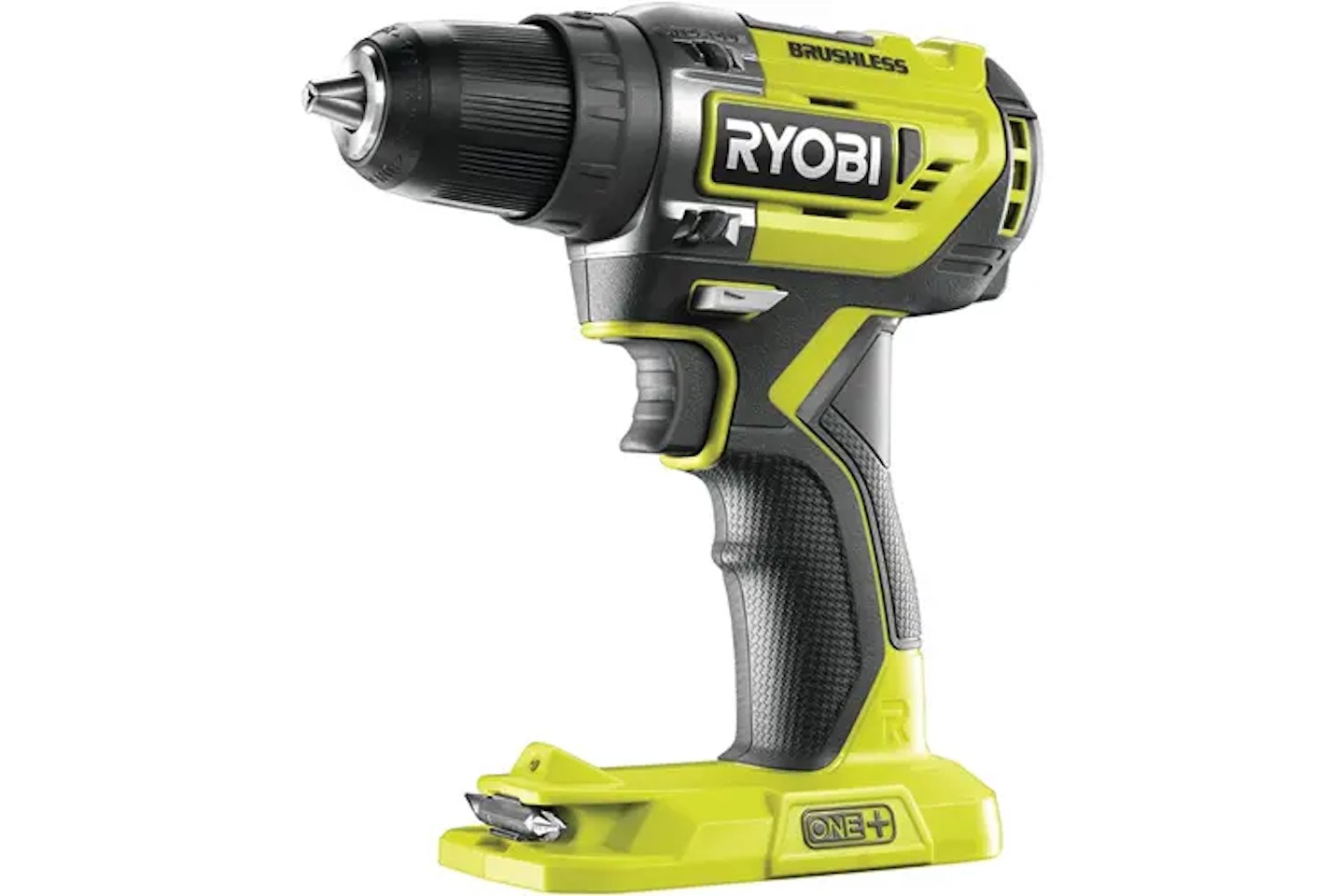
The neon green brand is hugely popular among DIYers because its tools offer extra performance over other power tools aimed at domestic use. Ryobi also has a huge selection making up its 18V ONE+ range of cordless power tools.
This particular drill driver is our overall winner because of its compact size, power, quality, and reliability. That’s a combination hard to fault. It also bears some clever features such as e-Torque, which automatically drives screws perfectly flush.
Pros
- Well-respected brand
- Powerful motor
- Wide range of gears and speeds
Cons
- Battery not included
| Type | Drill driver |
| Voltage | 18V |
| Torque | 50Nm |
| Weight | 1 kg |
| Chuck size | 13mm |
| Motor | Brushless |
| Max wood | 32mm |
| Max steel | 13mm |
| Warranty | 2 years, or 3 years with registration |
Best drill for light work
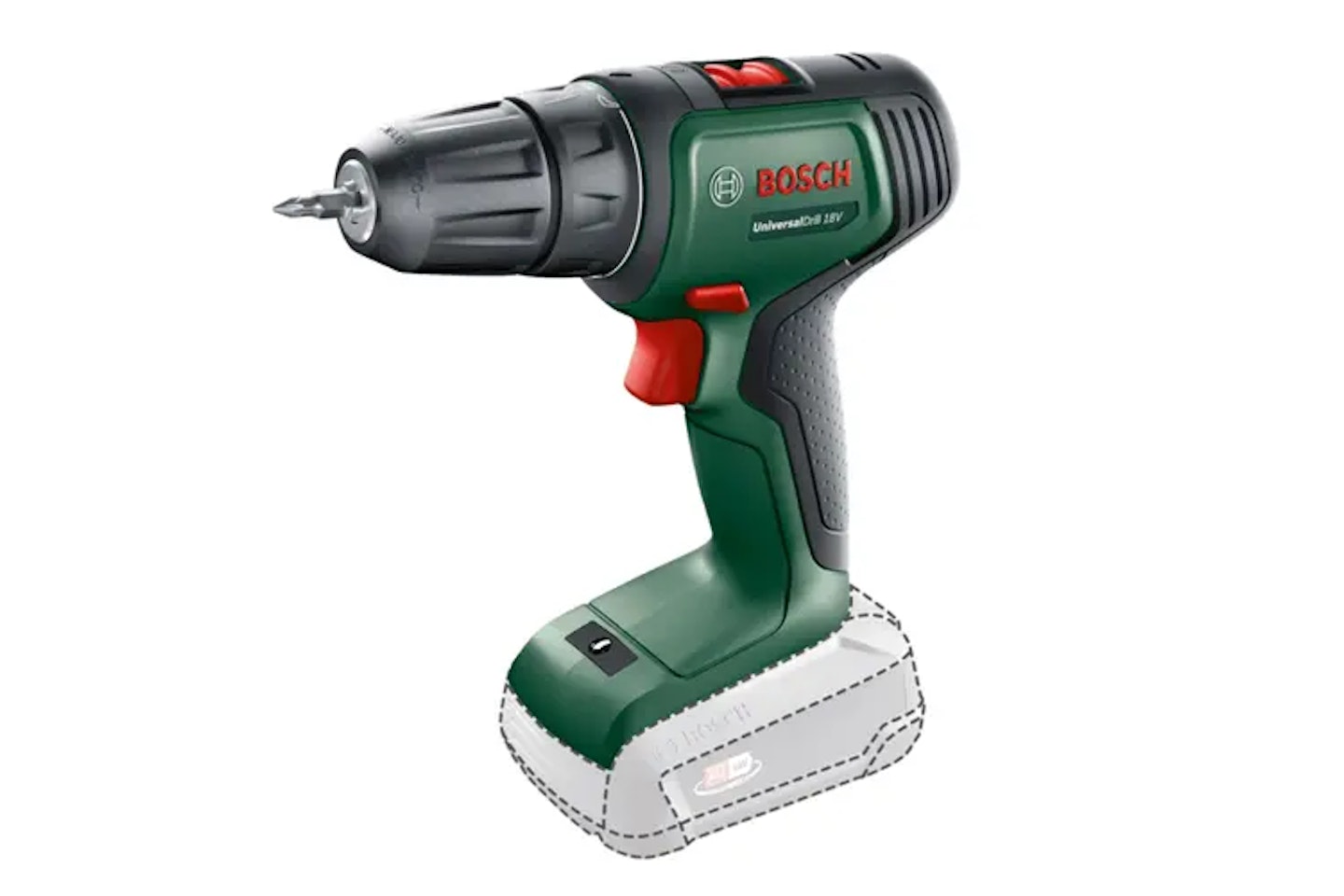
Bosch’s green range of power tools provides some of the best value for money you’ll find, balancing quality and the user’s requirements for lighter domestic tasks. The UniversalDrill 18V is part of Bosch’s Power For All 18V range and is the best model for casual DIYers.
It’s not quite as powerful as the Ryobi drill, yet possesses enough torque for all the requirements the 10mm chuck allows. Still featuring a two-speed gearbox and dozens of torque settings, just like more serious drills, the UniversalDrill 18V is ideal for light drilling and screwdriving alike.
Pros
- Lightweight
- Good value for money
- Two-speed gearbox
Cons
- Battery not included
| Type | Drill driver |
| Voltage | 18V |
| Torque | 40Nm |
| Weight | 0.89 kg |
| Chuck size | 10mm |
| Motor | Brushed |
| Max wood | 30mm |
| Max steel | 10mm |
| Warranty | 2 years, or 3 years with registration |
Best heavy-duty DIY drill
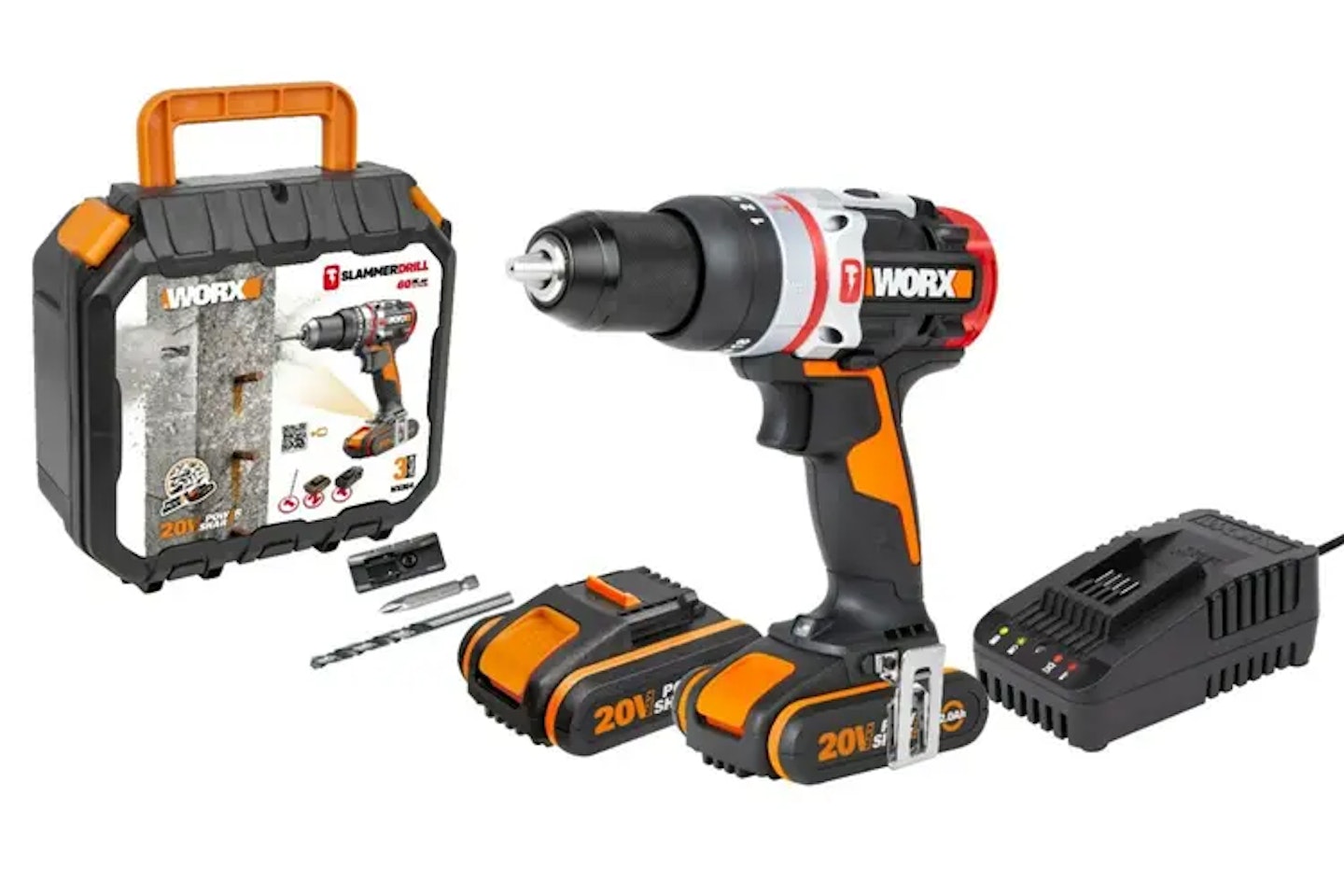
www.very.co.uk
Worx occupies a space somewhere between DIY and trade levels. Its Slammer hammer drill not only has a fantastic name but possesses plenty of torque thanks to its brushless motor. As a result, and unlike most drills of this type, it can drill into concrete. The Slammer is bigger and heavier than the Bosch, but it’s still comfortable to hold, and the performance between the two isn’t comparable.
At the price it is, the Slammer is also amazing value for money, given that it comes in a full kit with two batteries and a charger in a hard case. We recommend the Slammer to those who want a serious DIY drill but can’t justify the price of a trade-level tool.
Pros
- High Torque motor
- Good value for money
- Batteries included
Cons
- Not many at this price point
| Type | Combi drill |
| Voltage | 18V |
| Torque | 60Nm |
| Weight | 1.7 kg |
| Chuck size | 13mm |
| Motor | Brushless |
| Max wood | 40mm |
| Max steel | 13mm |
| Warranty | 1 year trade; 2 years DIY, or 3 years with registration |
Best drill for awkward areas
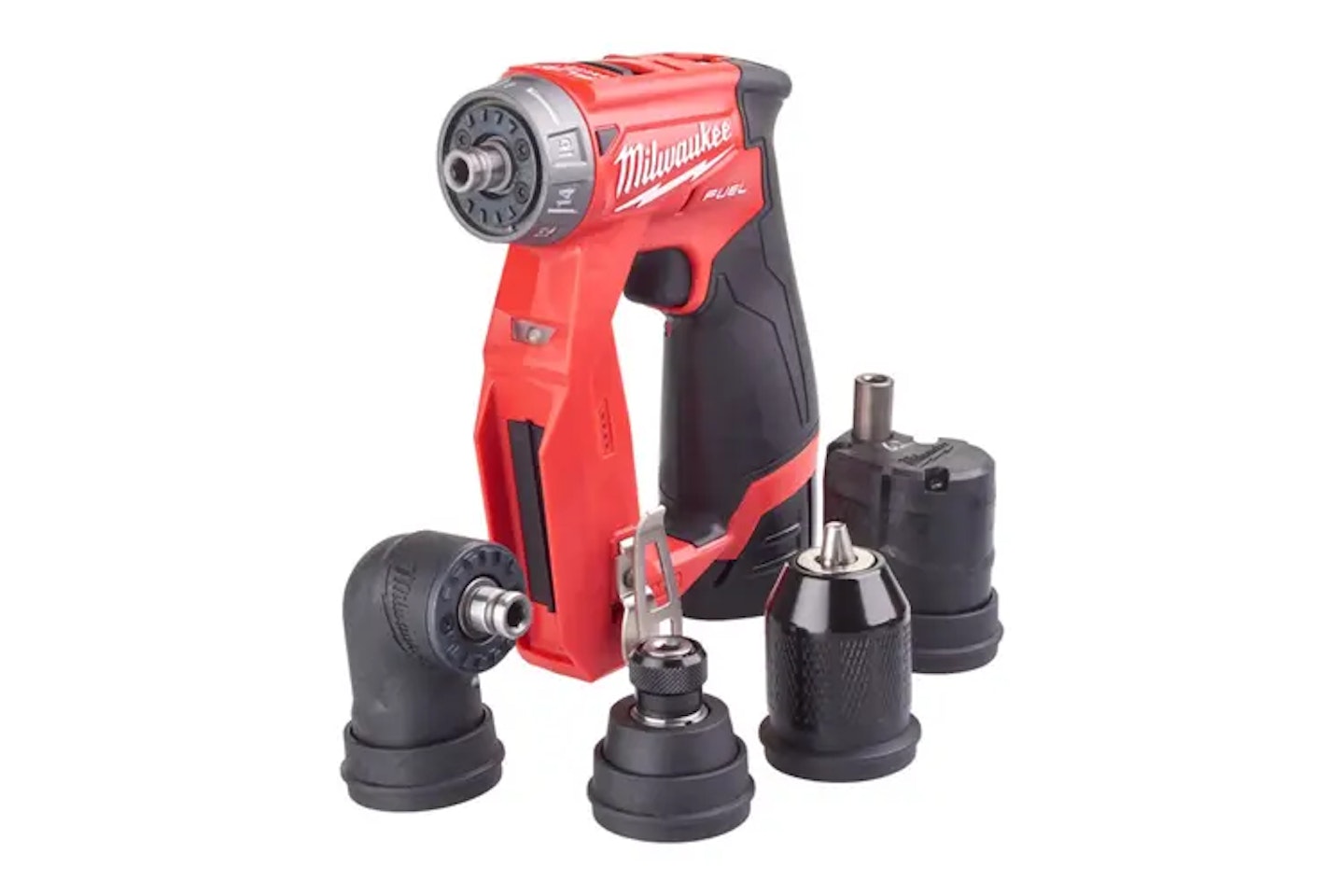
ffx.co.uk
Milwaukee is unquestionably a power tool brand for tradespeople. But alongside its brilliant but expensive 18V range is its smaller, cheaper, and equally brilliant 12V range. This slightly unusual-looking drill driver is part of the M12 range and addresses the accessibility issues users of drill often face.
This drill is smaller and lighter than the 18V drills above, but in addition to that, comes with four head attachments (10mm chuck, right angle, offset, and 6mm hex) in order to reach weird places. Even though it’s a 12V drill, it’s still as powerful as the 18V Bosch above, thanks to Milwaukee’s Power state brushless motor.
Pros
- High torque
- Lightweight
- Different head attachments for hard-to-reach areas
Cons
- Battery mounting can be awkward
| Type | Drill driver |
| Voltage | 18V |
| Torque | 60Nm |
| Weight | 0.9kg (incl battery) |
| Chuck size | 10mm |
| Motor | Brushless |
| Max wood | 28mm |
| Max steel | 10mm |
| Warranty | 1 year trade, 3 years with registration |
Buying a cordless drill: things to consider
Quality:
For your sake, it's best to stick to established, reputable tool brands. The internet is drowning in terrible knock-offs and rip-off drills, promising big things but delivering nothing but disappointment.
Type:
Drill drivers are for drilling holes and fastening/loosening screws. Combi drills can do these things but have the added ability of a hammer function for drilling into masonry or brick. Combi drills are more powerful and better all-rounders but not everyone needs the hammer function. You certainly don’t for automotive use.
Chuck size:
Cordless drills tend to have a 3/8-inch/10mm or a 1/2-inch/13mm chuck. This determines the size of the drill bits you can use with the power drill. 13mm chucks can house larger drill bits and are meant for bigger jobs, while a 10mm chuck is fine for almost all domestic jobs.
Motor:
A regular power tool motor uses carbon blocks called brushes. These blocks conduct electrical currents to drive the tool. It’s a good system but over time brushes wear out and need replacing. Brushless motors instead use electromagnets (which don't wear out) and are more efficient, compact, and powerful. Therefore, if you are the kind of person to use your drill a lot, opt for brushless.
Torque:
As with cars, the more torque a drill has, the easier it is for it to perform. However, variable torque on drills is an important feature because it can prevent over-screwing or head-stripping when driving in a screw.
Batteries:
Modern cordless tools run with lithium-ion batteries. Drills can be used with the lithium-ion batteries of that particular brand, which will have a range of sizes, often from 1.5Ah up to six or so. Larger capacity batteries give longer run time but add heft. Cordless power tools of one brand cannot be used with batteries from another.
Purpose:
Really think about what you want a cordless drill for. It’s easy to get swept away by models aimed at tradespeople, but they’re overkill for most DIYers, who would be better served by those designed for domestic use.
Automotive accessories for drills
Below are some useful automotive kits and accessories for drills. All of these are aimed at DIYers and are simple to use (provided instructions are followed).
Holts’ Headlight Restoration Kit is our first recommendation for such products. Bar an electric drill, there is everything you need in this kit and crucially, the sum of its parts produces a tremendous result, provided you take your time and follow the procedure correctly. Sand, polish, add the sealant, and you’re all set.
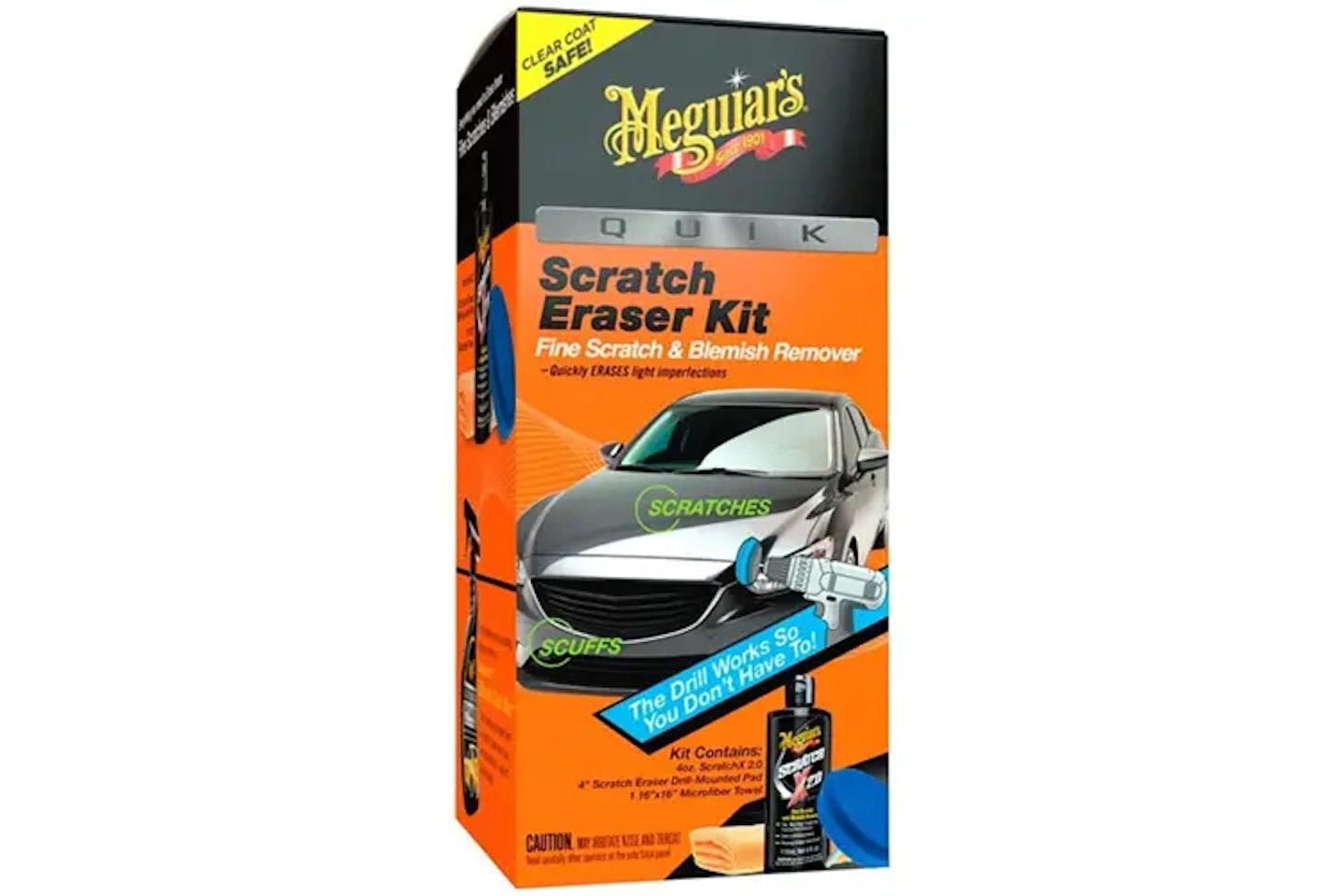
This scratch repair kit has everything you need: a four-inch drill-mounted applicator pad, a tube of ScratchX 2.0 Fine Scratch and Blemish Remover and a soft microfibre towel to finish. To remove your scratch using a drill, begin by attaching the applicator pad to a standard household drill then apply a small amount of the Meguiar’s scratch remover to the surface. Use the drill to press the eraser pad into the scratch and begin making overlapping passes, running the drill at medium speed.


